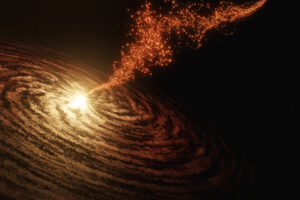Outline of the Article
- Introduction to Solar Storms
- What is a solar storm?
- Impact on the Solar System
- Understanding Coronal Mass Ejections (CME)
- Definition and composition
- How CMEs affect Earth
- NOAA’s Prediction of Solar Storm
- Date and details of the predicted storm
- Expected impact on Earth’s systems
- Insights from Space Weather Physicists
- Dr. Tamitha Skov’s analysis of the incoming storm
- Anticipated effects on Earth’s atmosphere
- Precautionary Measures and Preparedness
- Steps recommended by experts
- Mitigation strategies for affected services
- Historical Solar Storms and Their Impact
- Notable solar storms in history
- Lessons learned from past events
- Technological Vulnerabilities to Solar Storms
- Vulnerable technologies and systems
- Long-term implications and risks
- Public Awareness and Education
- Importance of educating the public
- How individuals can prepare for such events
- Global Collaboration and Monitoring
- International efforts in monitoring solar activity
- Collaborative measures for better preparedness
- Conclusion
Solar Storm: Impact and Precautions
The National Oceanic and Atmospheric Administration (NOAA) has issued a warning about an impending solar storm that is set to strike Earth on December 1. These storms, known as coronal mass ejections (CMEs), consist of waves expelled from the Sun, affecting the entire Solar System, including our planet.

Understanding Solar Storms
Solar storms, specifically CMEs, are eruptions of mass and energy from the Sun’s corona. These events can send bursts of solar wind and magnetic fields into space, potentially disrupting various technologies on Earth.

NOAA’s Prediction
NOAA, a leading authority on weather and environmental changes, has highlighted the expected impact of the upcoming solar storm. This prediction raises concerns about potential disruptions in radio and GPS services.
Insights from Dr. Tamitha Skov
Renowned space weather physicist Dr. Tamitha Skov has provided insights into the expected effects of the impending storm. Her analysis suggests a glancing blow initially, with minor effects anticipated. However, she emphasizes the possibility of auroras at high latitudes, along with potential impacts on GPS and amateur radio services.
Preparedness Measures
In light of the predicted solar storm, experts recommend precautionary measures. Mitigation strategies include minimizing reliance on affected technologies and ensuring adequate preparation for potential disruptions.
Learning from Past Events
Studying historical solar storms provides valuable lessons. Notable past events serve as reminders of the vulnerabilities of modern technology to such natural phenomena.
Technological Vulnerabilities
Various technologies, including satellite systems and power grids, face vulnerabilities during solar storms. Understanding these vulnerabilities is crucial for implementing effective protective measures.
Public Awareness and Education
Raising public awareness about solar storms is vital. Educating individuals about the potential impacts and necessary precautions empowers communities to better prepare for such occurrences.
Global Collaboration
International collaboration and monitoring efforts are essential in predicting and mitigating the impacts of solar storms. Collective measures enhance preparedness and response capabilities.
Conclusion
Solar storms pose significant challenges to modern technology, with potential disruptions to vital services. However, through scientific understanding, preparedness measures, and global cooperation, we can mitigate the impact and ensure a more resilient future.
FAQs
- How often do solar storms occur? Solar storms vary in frequency, with some occurring more frequently than others. The intensity and impact can also differ.
- What technologies are most vulnerable to solar storms? Satellite systems, power grids, and communication networks are among the most vulnerable technologies during solar storms.
- Can individuals take steps to protect themselves during a solar storm? While individuals can’t shield against the storm itself, minimizing reliance on affected technologies and staying informed can help mitigate personal impact.
- Are there early warning systems for solar storms? Organizations like NOAA provide warnings based on solar activity, offering some advanced notice of potential storms.
- What can we learn from past solar storm events? Studying historical events helps us understand the potential impacts on technology and infrastructure, informing our preparedness strategies.
Reading your article has greatly helped me, and I agree with you. But I still have some questions. Can you help me? I will pay attention to your answer. thank you.
yes